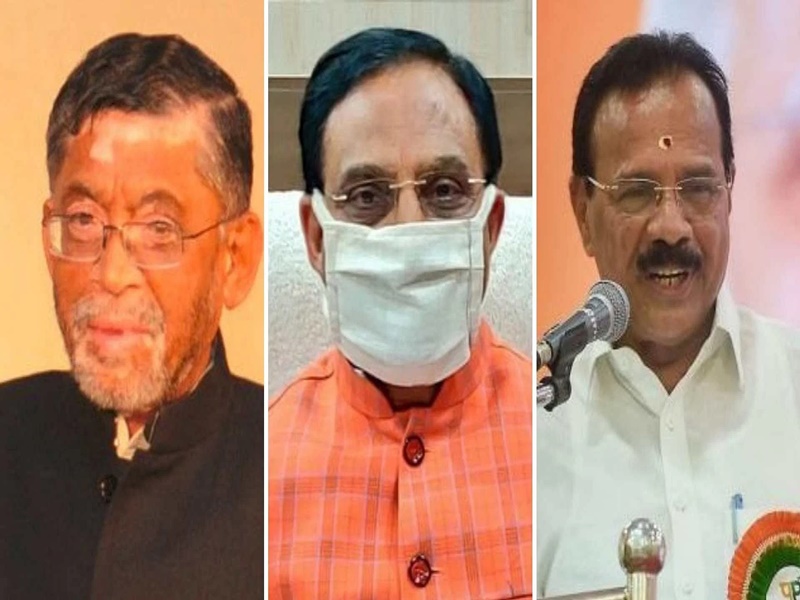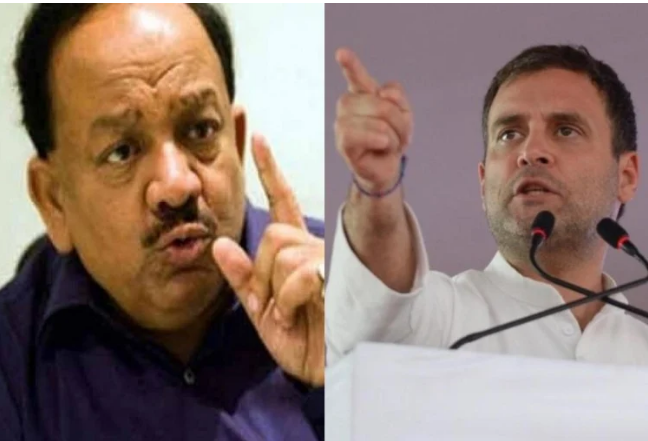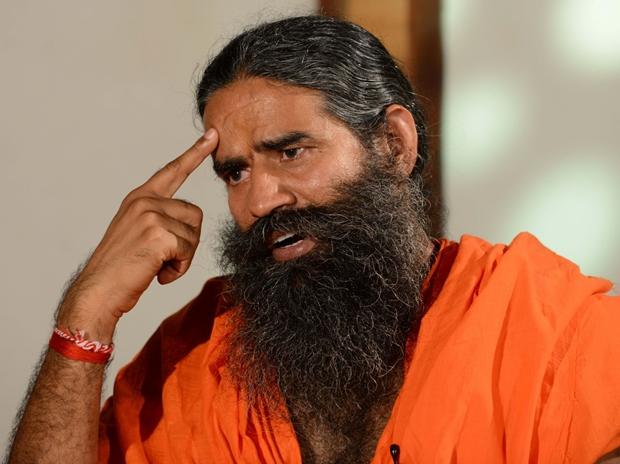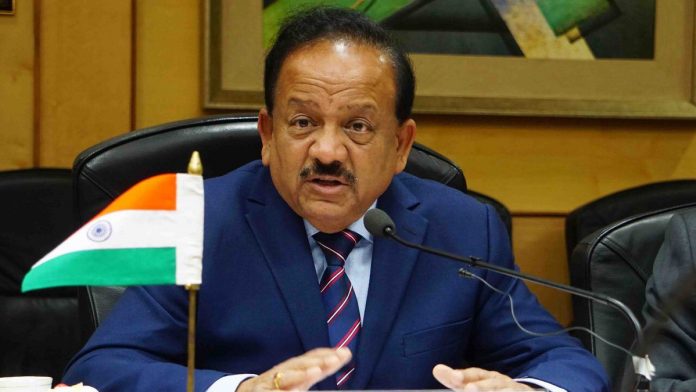Latest Science News
Desertification, Land Degradation, Drought cost India 2.54% of its GDP in 2014-15: Teri study
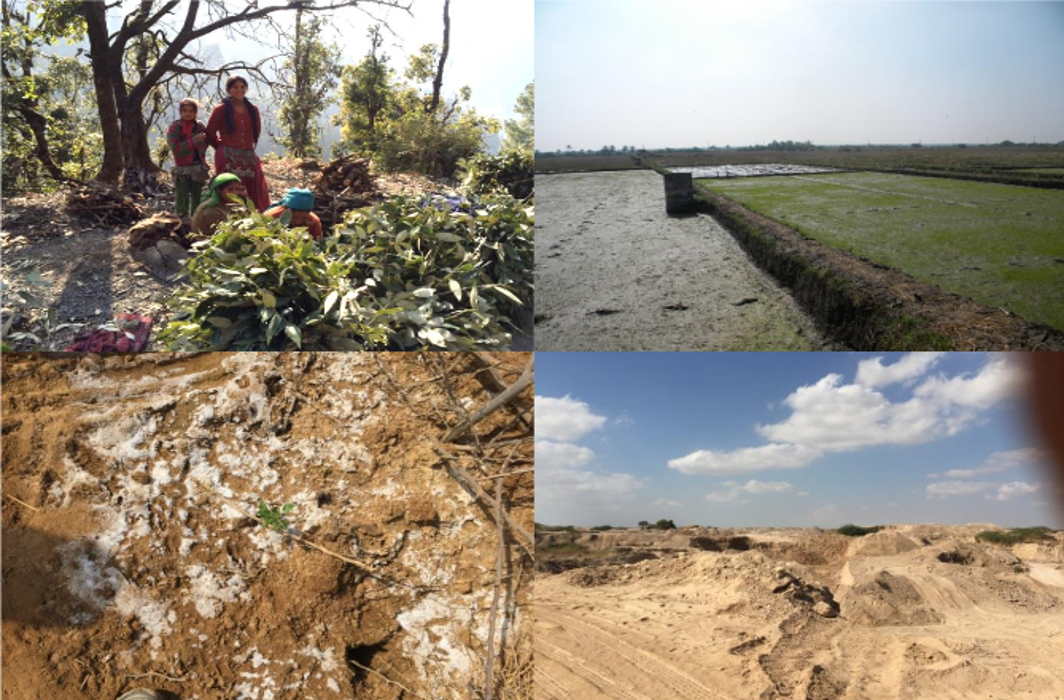
Desertification, Land Degradation and Drought (DLDD) cost India about 2.54 per cent of its Gross Domestic Product (GDP) in 2014-15, a study conducted by The Energy and Resources Institute (TERI) and commissioned by the Environment Ministry has found.
Union Environment Minister Harsh Vardhan released the study of Economics of DLDD during the inaugural session of the four-day Asia Pacific Regional Workshop of the United Nations Convention to Combat Desertification (UNCCD) that concluded on Saturday, April 28.
Desertification, climate change and the loss of biodiversity were identified as the greatest challenges to sustainable development during the 1992 Rio Earth Summit. The UNCCD is one of three Rio Conventions which focuses upon DLDD.
Desertification is the process of fertile land becoming desert, typically as a result of drought, deforestation, or inappropriate agriculture.
 This cost is estimated at 2.5% of India’s GDP in 2014/15 and about 15.9% of the gross value added (GVA) from the agriculture, forestry and fishing sectors. Almost 82% of the estimated cost is on account of land degradation and only 18% due to land use change. This result suggests that while loss of productive land for forests, wetlands, rangelands and other ecosystems is a concern , a larger concern is the degradation of existing ecosystems.
This cost is estimated at 2.5% of India’s GDP in 2014/15 and about 15.9% of the gross value added (GVA) from the agriculture, forestry and fishing sectors. Almost 82% of the estimated cost is on account of land degradation and only 18% due to land use change. This result suggests that while loss of productive land for forests, wetlands, rangelands and other ecosystems is a concern , a larger concern is the degradation of existing ecosystems.
This is a serious concern particularly given that India aims to be land degradation-neutral in 2030, where any increases in land degradation are balanced by equivalent gains in land reclamation to ensure no additional net loss of land-based natural capital.
Also it can be seen that the distribution of the economic burden of losses due to different types of land degradation is different from the distribution of the physical extent of degradation itself. For instance, according to recent (2016) figures, water erosion accounts for 37.4% of the total area affected by degradation , followed by vegetation degradation (30.4%), wind erosion (18.9%) and salinity (3.8%).
However, in terms of the cost of land degradation and use change, the economic cost of forests degradation accounts for over 55% of the total, although in physical terms it ranks second in its contribution to India’s degraded land area. This is on account of the higher cost per hectare of vegetal or forest degradation.
In contrast, onsite and offsite losses due to water erosion, topping the list in terms of physical extent, account for about 14% of the total economic cost.
“The report has highlighted that DLDD factors had cost India about 2.54 per cent of its GDP in 2014-15,” an official statement released at the end of the workshop said.
Vardhan during the inaugural session had said that globally, drylands lose 23 hectares per minute to drought and desertification which translated into a loss of 20 million tonnes of potential foodgrain production in a year.
The workshop had been jointly hosted by the Environment Ministry and UNCCD Secretariat.
Addressing the closing session, Union Environment Secretary C K Mishra said the workshop will enable country parties to participate effectively and efficiently in the UNCCD reporting process, to submit the national report in time and in particular for target 15.3 on Land Degradation Neutrality (LDN).
He added that the workshop has not only provided a diverse and multi-disciplinary knowledge-sharing platform addressing DLDD issues, but also an opportunity to bring all key stakeholders from Asia to India and discuss key aspects of reporting Sustainable Development Goals (SDGs) and Land Degradation Neutrality (LDN).
The four-day workshop (April 24-27) trained the participants in the use of an innovative land degradation monitoring tool by Conservation International, for the reporting process of UNCCD.
The participants included delegates from about 40 Asia Pacific countries, as well as representatives from 12 Indian states affected by land degradation, scientists and researchers from scientific institutions of national importance and line-Ministries.
“Knowing where hotspots or problem areas are, is the first step ahead towards combating land degradation. With this data, policy-makers can prioritize areas for interventions to improve the livelihoods in rural communities that directly depend on healthy land,” said the statement released at the workshop.
The United Nations Convention to Combat Desertification (UNCCD) is the only legally binding international agreement on land issues.
India News
President Droupadi Murmu launches India’s first homegrown CAR T-cell therapy for cancer treatment
The gene-based therapy, which is developed by the IIT Bombay and Tata Memorial Centre, is being rolled out in India at about one-tenth of its price outside the country.
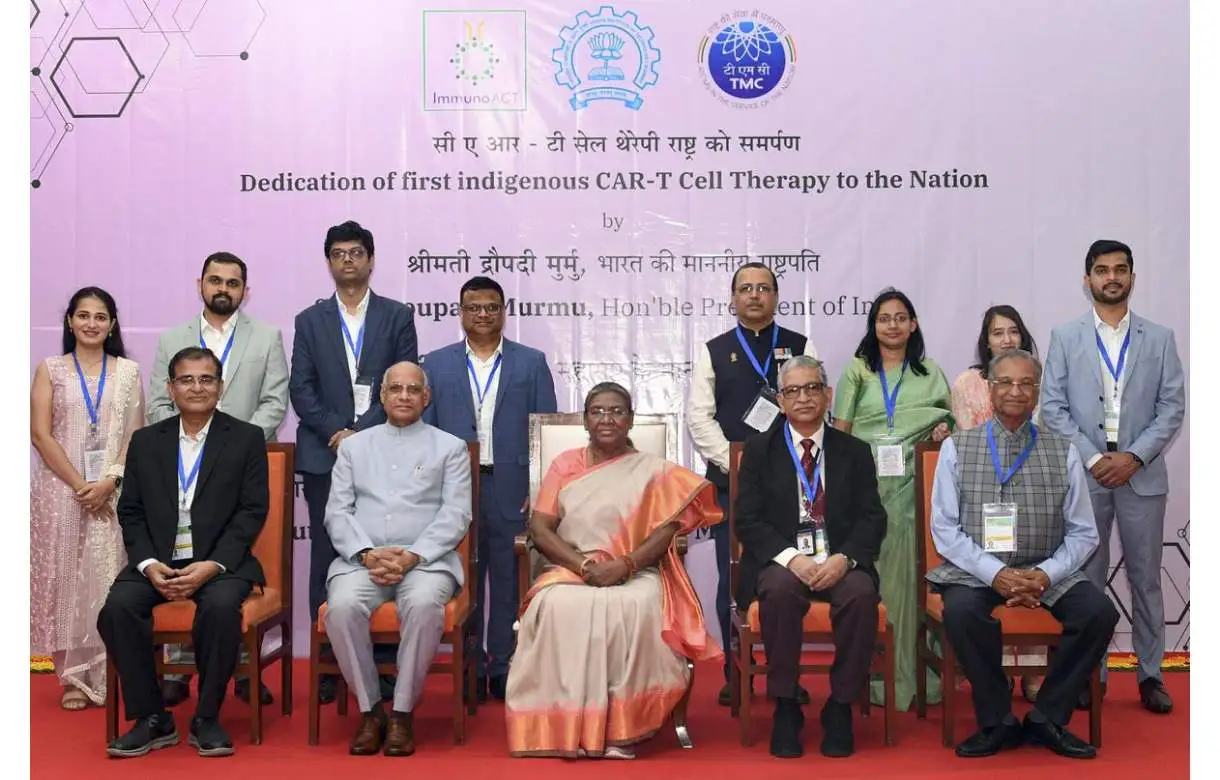
President Droupadi Murmu on Thursday launched India’s first indigenously-developed CAR T-cell therapy, a gene-based therapy, for cancer treatment, hailing it as a breakthrough that provides new hope for humankind in the battle against the diseases.
Speaking at the launch event at the Indian Institute of Technology (IIT) Bombay, Murmu said the indigenous development of the CAR T-cell therapy was an example of the Make in India initiative.
The gene-based therapy, which is developed by the IIT Bombay and Tata Memorial Centre, is being rolled out in India at about one-tenth of its price outside the country, as per the senior official.
In CAR T-cell therapy, a patient’s T-cells, which is a type of immune system cell or stem cell, are modified in the laboratory and inserted back into the patient to attack and destroy cancer cells after editing the stem cell.
The NexCAR19 CAR T-cell therapy, the country’s first Made in India CAR T-cell therapy, is expected to bring down the cost of treatment significantly.
During her speech, Murmu said that this therapy is considered a phenomenal advance in medical sciences. The development of this therapy is also an example of the Make in India initiative and speaks volumes about Indian scientists and physicians, she added.
The launch of India’s first gene therapy is a significant breakthrough in the battle against cancer. As this line of treatment, named CAR T-cell therapy, is accessible and affordable, it provides a new hope for the whole of humankind, President Murmu further added.
The Tata Memorial Centre director Sudeep Gupta said the CAR T-cell therapy was enormously expensive and out of the reach of an overwhelming majority of people.
Asserting that, he said NexCar19 needs to be custom manufactured for every patient under the most stringent conditions, but it has been rolled out at approximately one-tenth of the price at which it is available outside India.
The treatment costs approximately Rs 4 crore abroad against Rs 30 lakh in India, said IIT Bombay director Prof Subhasis Chaudhuri.
He further said that the low-cost CAR T-cell therapy was a huge achievement for the country and cancer patients, and places India firmly on the global map of cell and gene therapy.
Comparing the achievement of Chandrayaan-3 with CAR T-cell therapy, Chaudhuri asserted that CAR-T cell therapy heralds India’s entry into the cell and genetic engineering group.
The Tata Memorial Centre director Gupta said the treatment will help some 20,000 Indians every year, and its rollout is a milestone in the field of cancer care and genetic engineering.
He added the CAR T-cell was not only a scientific achievement of the highest order but also had immense practical application. NexCAR19 will save many, many lives and wipe many, many tears, he emphasised.
India News
ISRO launches weather satellite INSAT-3DS to monitor Earth’s surface, oceans
The Naughty Boy has now become a mature, obedient and disciplined boy like PSLV, and GSLV as they have become a very robust vehicle for ISRO, said Tomy Joseph.
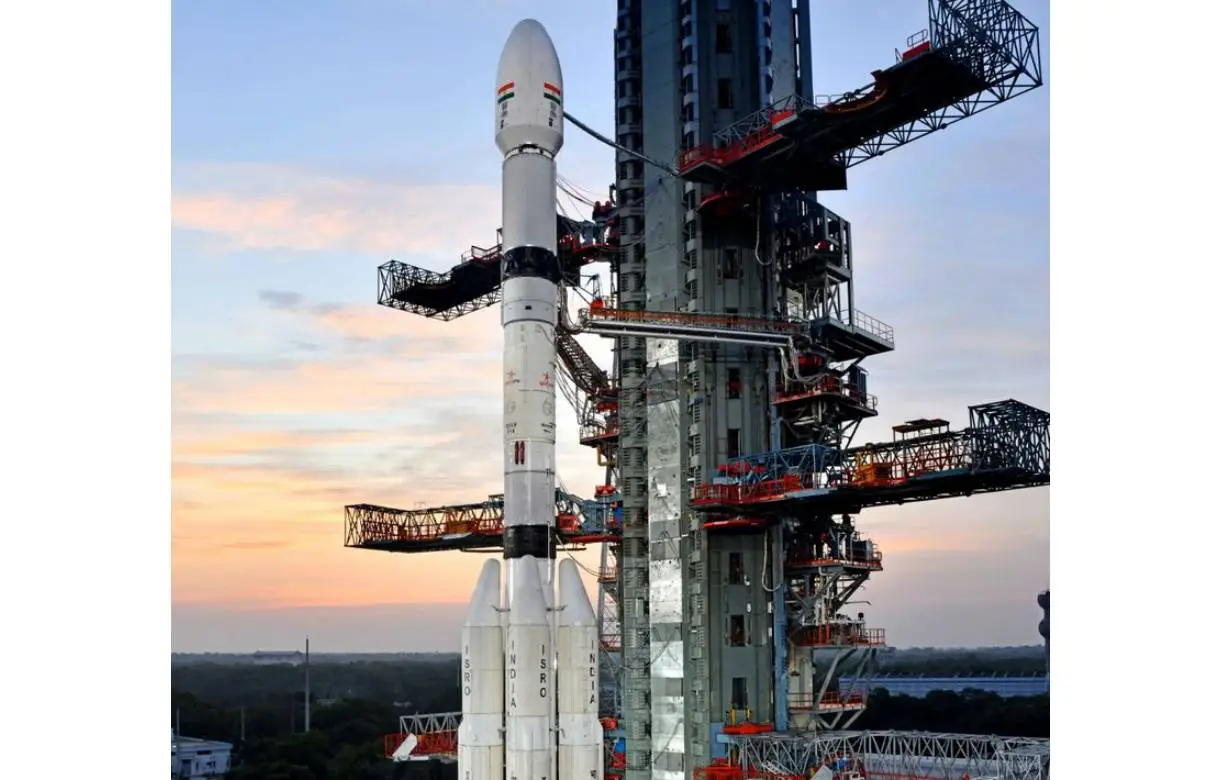
The Indian Space Research Organisation (ISRO) on Saturday launched the INSAT-3DS mission from Satish Dhawan Space Centre in Sriharikota at 5:35 pm to monitor the Earth’s surface, observe the ocean and analyse the environment through various essential meteorological perspectives.
In its mission, the Geosynchronous Satellite Launch Vehicle (GSLV) aimed to deploy the INSAT-3DS meteorological satellite into the Geosynchronous Transfer Orbit (GTO). Subsequent orbit-raising maneuvers will ensure that the satellite is positioned in a Geo-stationary Orbit.
After being positioned in GSO, it will provide information on diverse atmospheric conditions via vertical profiles. INSAT-3DS will manage data collection and dissemination from Data Collection Platforms (DCPs). The satellite will help in search and rescue services.
Congratulating the team, ISRO Chairman S Somanath expressed his happiness over the successful accomplishment of the mission GSLV-F14 INSAT-3DS. He further said that the spacecraft has been injected into a very good orbit. The space agency has also noted that the vehicle has performed very well.
The INSAT-3DS Mission Director, Tomy Joseph sarcastically remarked, saying the Naughty Boy has now become a mature, obedient and disciplined boy like PSLV, and GSLV as they have become a very robust vehicle for ISRO.
The Geosynchronous Satellite Launch Vehicle (GSLV) is a launch vehicle with a length of 51.7 meters and a liftoff mass of 420 tonnes. It consists of three stages, the first stage (GS1) is made up of a solid propellant motor with 139-ton propellant and four earth-storable propellant stages (L40) strapons. Each strapon carries 40 tons of liquid propellant.
The second stage (GS2) is also an earth-storable propellant stage that carries 40-ton propellant, and the third stage (GS3) is a cryogenic stage with a 15-ton propellant loading of liquid oxygen (LOX) and liquid hydrogen (LH2).
To protect the satellite during the atmospheric regime, it is covered by an Ogive payload fairing. The GSLV is versatile and can be used to launch various spacecraft capable of performing communications, navigation, earth resource surveys, and other proprietary missions.
The launch of INSAT-3DS was a follow-on mission of Third Generation Meteorological Satellite from Geostationary Orbit. According to ISRO, the GSLV-F14/INSAT-3DS mission has been fully funded by the Ministry of Earth Sciences (MoES) and designed for enhanced meteorological observations and monitoring of land and ocean surfaces for weather forecasting and disaster warning.
The satellite will augment the Meteorological services along with the presently operational INSAT-3D and INSAT-3DR satellites.
Notably, the services will be used by various departments of the MoES such as the India Meteorology Department (IMD), National Centre for Medium-Range Weather Forecasting (NCMRWF), Indian Institute of Tropical Meteorology (IITM), National Institute of Ocean Technology (NIOT), Indian National Center for Ocean Information Services (INCOIS) and various other agencies.
India News
PM Modi says day not far when an Indian will land on moon in indigenously built spacecraft
PM Modi said a strong roadmap has been drawn till 2040 for the space sector. He made the announcement after flagging off the first Namo Bharat train on the 17 km stretch of the Delhi-Meerut Regional Rapid Transit system.

Prime minister Narendra Modi on Friday said the government has drawn up a roadmap for the development of space sector and the day is not far when an Indian will travel to the moon in an indigenously built spacecraft. PM Modi said India’s Gaganyaan will soon take Indian astronauts to space and the India wants to establish its own space station.
PM Modi said a strong roadmap has been drawn till 2040 for the space sector. He made the announcement after flagging off the first Namo Bharat train on the 17 km stretch of the Delhi-Meerut Regional Rapid Transit system.
PM Modi recalled the success of India’s moon mission Chandrayaan3 which had recently placed the country’s tricolour on the lunar surface. He said India of the 21st century is writing new chapters of progress and development for the landing on the moon has left the world awestruck.
PM Modi added with impeccable hosting of the G20 summit, today’s India has become the centre of attraction and curiosity for the world. He said today’s India wins more than 100 medals in the Asian Games.
PM Modi added today’s India launches 5G on its own strength and takes it to all corners of India. He further added todays India does the highest number of digital transactions. He said the Namo trains that were flagged off today were all made in India.
PM Modi set goals for the Indian Space Research Organisation (ISRO) by asking engineers and scientists to work towards setting up an Indian space staion by 2035 and sending an Indian astronaut to the lunar surface by 2040. PM Modi also asked the scientists to undertake interplanetary missions like the Venus orbiter and also attempt a landing on Mars. PM Modi further added the government has handed over festival gifts by reducing the gas cylinder price by Rs 500 for Ujjwala Yojana beneficiaries.
-

 Entertainment23 hours ago
Entertainment23 hours agoLaapataa Ladies OTT release : Social media praises Kiran Rao’s film, says simple yet impactful
-
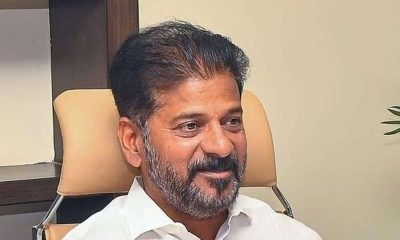
 Latest Politics News22 hours ago
Latest Politics News22 hours agoDelhi Police summons Telangana CM Revanth Reddy in Amit Shah fake video case
-

 Latest Politics News5 hours ago
Latest Politics News5 hours agoAmit Shah slams Congress over fake video, plays out actual video, says BJP supports reservation
-

 Entertainment4 hours ago
Entertainment4 hours agoIbrahim Ali Khan makes Instagram debut, first post goes viral
-

 Latest Politics News3 hours ago
Latest Politics News3 hours agoKarnataka MP Prajwal Revanna suspended from JDS over sex scandal

